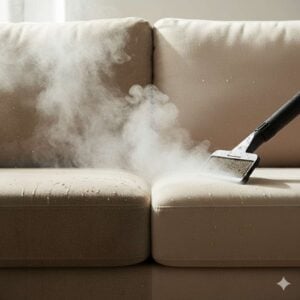Moving homes or renovating your apartment in the UAE can be stressful, especially when it comes to protecting your furniture. Dust, scratches, and accidental damage can happen easily if items are not properly wrapped. That’s why learning about furniture wrapping is essential. While hiring professionals is convenient, you can also do it yourself with the right tools and method. This guide will explain seven clear DIY steps to wrap your furniture safely, plus a realistic cost estimation for doing it yourself versus hiring a professional wrapping service in the UAE. By following these steps, you can protect your belongings during transport or long-term storage while saving money.
Table of Contents
ToggleWhy Furniture Wrapping Matters
Furniture wrapping is not just about keeping things clean; it’s about protection. In Dubai, Abu Dhabi, and other Emirates, high humidity, dust storms, and frequent relocations make furniture more vulnerable to scratches, moisture, and dirt. Proper wrapping prevents paint transfer, fabric tears, and even odor absorption from nearby materials. Whether you’re moving to a new apartment or preparing for renovations, wrapping helps maintain your furniture’s value and appearance. It’s a simple process that anyone can do with patience and the right materials.
Tools and Materials You’ll Need
Before starting the wrapping process, make sure you have all the materials ready. Having these items in advance makes the job faster and more organized:
- Stretch film or cling wrap (industrial type)
- Bubble wrap for delicate items
- Cardboard sheets or foam panels
- Furniture blankets or moving pads
- Adhesive tape (strong packing tape)
- Scissors or a utility knife
- Labels and markers
- Protective gloves (optional, but useful for large furniture)
Once you’ve prepared your materials, clear enough working space. Ideally, wrap furniture in an open, clean area where you can move around comfortably.
7 DIY Steps for Furniture Wrapping
Here’s a detailed, step-by-step process to wrap your furniture safely and efficiently.
Step 1: Clean the Furniture
Before wrapping, clean all surfaces with a soft cloth to remove dust and dirt. Trapped particles can cause scratches or stains during transport. For wooden furniture, use a mild cleaner or a damp cloth — but make sure it’s completely dry before wrapping. For fabric furniture like sofas, vacuum first to remove crumbs and pet hair.
Step 2: Disassemble When Possible
If your furniture can be taken apart, do it. Remove legs from tables, cushions from sofas, and shelves from cabinets. This makes wrapping and moving easier while preventing parts from breaking. Keep screws and small components in labeled plastic bags so you can easily reassemble later.
Step 3: Protect Fragile Parts First
Focus on fragile areas such as glass tops, mirrors, and edges. Use bubble wrap or foam padding to cover these sections. For mirrors or glass, use extra layers and mark them as “fragile” with tape. Wrapping corners with cardboard pieces also helps absorb impact if something bumps into them during transport.
Step 4: Wrap Upholstered Furniture
For sofas, chairs, and mattresses, use stretch film tightly around the surface. Start from the bottom and move upward in overlapping layers. This keeps out moisture and dust. Avoid taping directly onto fabric, as adhesive can leave marks. For extra protection, add a furniture blanket or moving pad on top of the plastic wrap if you plan to store it for a long time.
Step 5: Wrap Wooden and Metal Furniture
For wooden furniture like tables, wardrobes, or shelves, use bubble wrap or foam sheets to cover the surfaces. Then secure them with stretch film. This dual-layer method prevents scratches while keeping moisture out. For metal frames, ensure they are dry before wrapping to prevent rusting. Avoid wrapping too tightly — allow a little flexibility so the material doesn’t crack under pressure.
Step 6: Secure the Wrapping
Once everything is covered, reinforce the wrapping with strong adhesive tape. Focus on the bottom edges and corners where the material may loosen during transport. Label each piece with its destination room (e.g., “Bedroom – Wardrobe” or “Living Room – Sofa”) so unloading becomes easier later. Use a permanent marker on tape or paper labels.
Step 7: Store or Transport Properly
If storing, keep wrapped furniture off the ground using pallets or wooden planks to prevent moisture absorption. Avoid stacking heavy items on top of delicate pieces. During transport, place wrapped furniture upright and secure it with straps to prevent movement. If using a truck, make sure the floor is clean and dry. Always load larger items first, then smaller ones on top.
Estimated Cost for DIY Furniture Wrapping
One of the biggest advantages of DIY furniture wrapping is cost savings. However, prices depend on the amount and size of furniture, as well as material quality. Below is an approximate cost breakdown for DIY wrapping in the UAE:
| Item | Estimated Price (AED) |
|---|---|
| Stretch film (large roll) | 25 – 40 |
| Bubble wrap (per 10 meters) | 20 – 35 |
| Furniture blankets (each) | 15 – 25 |
| Foam or cardboard sheets | 10 – 20 |
| Adhesive tape (3 rolls) | 10 – 15 |
| Labels and markers | 5 – 10 |
For a typical 1-bedroom apartment, wrapping all furniture yourself can cost around AED 100 to 200 depending on the materials used. In comparison, professional wrapping services in the UAE may charge between AED 250 to 600, depending on the number and size of items. Professionals include labor, materials, and transport protection, which is why their prices are higher. However, if you want to ensure perfection, professional services like those offered by Bio-On Cleaning Services provide expert handling and safe packaging verified by our team before starting any work.
Tips to Make DIY Wrapping Easier
- Work with a partner — two people can wrap large furniture faster and more safely.
- Use colored labels for better organization during unloading.
- Take photos before disassembling complex furniture so you remember how to reassemble it later.
- Use recyclable materials whenever possible to minimize waste.
- Don’t rush the wrapping process — take your time to ensure every corner is protected.
When to Choose Professional Furniture Wrapping
While DIY wrapping is ideal for smaller moves or short-term storage, professional help becomes worth it when dealing with large, valuable, or fragile items. Professionals bring specialized materials, experience, and equipment like padding machines or lifting straps. In the UAE, Bio-On Cleaning Services offers affordable wrapping services that meet municipality standards and eco-friendly practices. Our prices are verified before any work begins, so you know exactly what to expect — no hidden fees. We handle residential, office, and villa furniture wrapping with care and confidentiality.
Conclusion
Furniture wrapping doesn’t have to be complicated or expensive. With the right materials, a bit of time, and patience, you can protect your furniture effectively during moving or storage. The seven DIY steps above — from cleaning and disassembling to layering and securing — ensure your items remain safe and clean. For those who prefer professional precision, Bio-On Cleaning Services provides cost-effective, expert-verified wrapping and moving support across Dubai, Abu Dhabi, and all Emirates. Whether you choose to do it yourself or hire professionals, protecting your furniture is an investment in peace of mind. If you’re preparing for a move, click the contact button on the right middle of this article to consult with our team and keep your valuable furniture damage-free.














